Posts Tagged ‘#fishonfly’
{{start}}
{{end}}
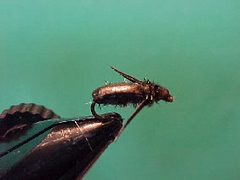
{{+1}}Corixia / back swimmer{{-1}}
{{start}}
Given the similarity of form and function both of these aquatic bugs can be represented by the following fly. This fly is best fished on a floating line that has been greased to within a meter of the fly or under a dry fly. It generally works well just sinking in the water column or moving naturally with the water current. If unnoticed try a couple of short figure of eight strips punctuated by a long pause to represent the natural swimming action of both bugs or a gentle lift to mimic "the natural" rising to the surface to breath.{{end}}
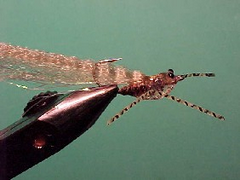
{{+1}}Mud prawn – small 5cm to 6cm long{{-1}}
{{start}}
The mud prawn is my first choice of fly for general prospecting in estuary waters or for targeting, whiting, flathead and bream. In water of only a meter or so fish it on an intermediate line. In deeper water I prefer to fish it on a sinking line. The best retrieve is a jerky but slow retrieve leaving plenty of time between strips for he fly to settle back on the bottom. used in this way it's a good representation of a prawn fleeing from its sandy retreat after being disturbed.{{end}}
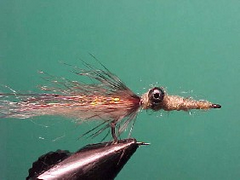
{{+1}}Baited breath{{-1}}
{{start}}
This is a prawn or shrimp imitation that has stood the test of time. Whilst I have seen it in all sorts of sizes and colours I have found that small flies tied in translucent shades of olives through to browns work best.{{end}}
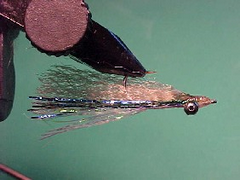
{{+1}}Crazy charlie{{-1}}
{{start}}
There have been many variations and adaptations. My version is based on the original tailed version and works well in estuaries on bream, whiting and flathead etc. I tie all my crazy Charlie flies much fuller with translucent materials rather than sparse with solid materials. I also tie my crazy Charlie flies longer than the hook shank and trim them down on the water if a shorter fly is needed.{{end}}
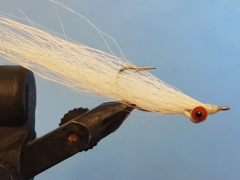
{{+1}}Clouser minnow{{-1}}
{{start}}
The Clouser in my view is the quintessential salt water fly. It can be tied in sizes to suit Bream or Billfish and with the correct dressing and size is equally at home in saltwater, trout and bass fisheries.{{end}}
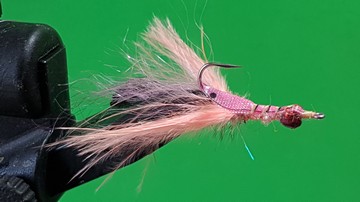
{{+1}}PET shell nipper{{-1}}
{{start}}
This PET shell nipper is significantly different to my PET shell prawn as that is unweighted and is designed to fish hook bite down whereas this nipper has a weight under its tail and is designed to be fished on the sandy bottom with the hook bite up.{{end}}
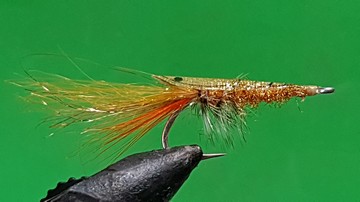
{{+1}}PET shell prawn{{-1}}
{{start}}
Prawns and shrimp are crustaceans, of the family Isopod, and are endemic to our Australian estuary waters. They are toward the top of the food chain for a lot of coastal species of fish including bream, flathead and whiting.{{end}}
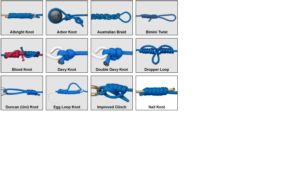
{{+1}}My favorite 8 knots{{-1}}
{{start}}
Just behind poor fishing technique and inept netting technique the most prolific reason for fish being lost is a problem with a knot. There are more knots than you can poke a stick at that can be used in fly fishing and over time you will settle on a few that you tie well and have confidence in. Over the years I have tried a lot of different knots and currently I have settled on the following 6 knots.{{end}}
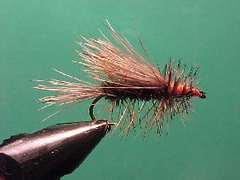
{{+1}}Stimulator variant{{-1}}
{{start}}
Whilst not tied to imitate any particular insect this down wing style of fly can be tied with your favorite materials and in your favorite colours to imitate a range of insects. It is a good prospecting fly when nothing appears to be happening. In larger sizes it can be twitched or fished dead drift to imitate a hopper, cicada or other terrestrial insect that has found itself in the water or in smaller sizes can be danced across the surface to imitate a caddis fly.{{end}}
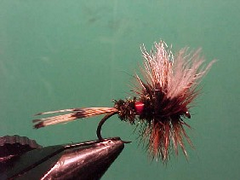
{{+1}}Hair winged royal coachman{{-1}}
{{start}}
I tie a few hair winged duns but don't tie them as representations of any particular Dun or Spinner (imago) stage of any specific insect. The Hair Winged Royal Coachman is an excellent example of a hair winged dun. It evolved from origins in England of the 1800’s.{{end}}













